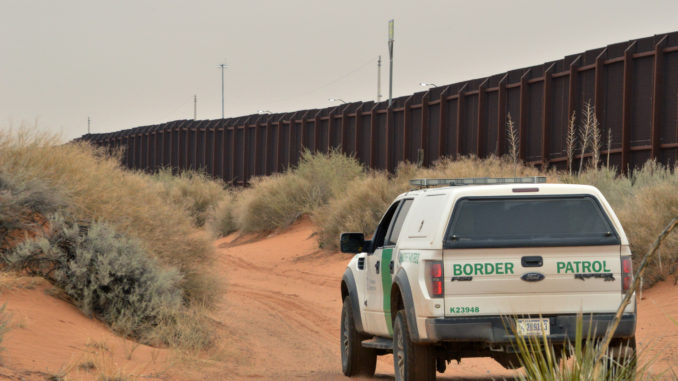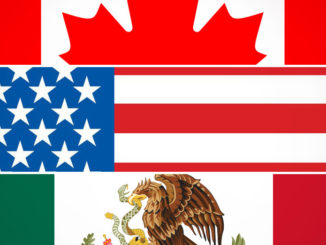
By Paul N. Stockton
Stationing troops at the border wouldn’t be as effective as having them work in Central America.
Sending thousands of additional National Guard soldiers to protect the U.S.-Mexico border to halt illegal immigration is the equivalent, in football terms, of asking your defense to make a goal-line stand. We need to move downfield and go on offense by pursuing a border strategy of “security in depth,” with the National Guard playing a vital role.
The administration has sent a fact-finding team to the border to assess whether additional National Guard forces should be deployed, to bolster the 128 already there. Congress is thinking along the same line, with calls to shift funds in the administration’s emergency border-security spending bill to deploy more National Guard troops. Texas Gov. Rick Perry has announced his plans to send 1,000 of the Texas National Guard’s soldiers to the border.
As assistant secretary of defense for homeland defense and Americas’ security affairs during President Obama’s first term, I helped deploy 1,200 National Guard personnel in 2010 to the Southwest border. It was a stopgap measure until the Customs and Border Patrol could hire, train and deploy more than 1,000 new agents.
The National Guard did an excellent job. That same year, however, I visited Guatemala and was shocked by what I saw on its border with Mexico. Guatemalan border police had virtually no ability to monitor or limit drug traffickers or undocumented immigrants at any of the major transit points, much less in the jungle that covers much of that border. Checkpoints on Mexico’s side were better manned, but they also lacked the detection, monitoring and information-sharing technologies that the U.S. uses to make its border forces more effective.
When I asked my Mexican counterparts whether they would want access to those technologies, they shrugged. The Mexican government had no interest in discussing how it might collaborate with the U.S. to stem illegal immigration and trafficking across Mexico’s southern border.
Mexico’s attitude is changing. President Enrique Peña Nieto’s interior minister, Miguel Angel Osorio Chong, announced two weeks ago that Mexico has adopted its first-ever border policy to establish “absolute control” over its southern border. Why the turnabout? Thousands of immigrants from Guatemala, Honduras and El Salvador are choosing to stay in Mexico rather than cross the U.S. border. The U.S. and Mexico now have a shared interest in stemming this northward flow of illicit immigration. The Obama administration should immediately make new offers to Mexico to provide U.S. border surveillance and information-sharing technologies, and make Mexico’s southern border a new bulwark for our shared security.
A security-in-depth approach should be extended even farther south. The leaders of Guatemala and other Central American nations recently met with President Obama to discuss measures to stem the flow of children to the U.S. The leaders also discussed new measures to counter much more dangerous trafficking operations run by transnational criminal organizations.
The administration’s emergency border-security spending bill includes assistance for Central American countries to help them deal with poverty, gang violence and other root causes of illegal migration, as well as secure their own borders. But Congress and the administration also should pursue a new opportunity to strengthen border security in the region by leveraging the National Guard’s close partnerships with Central American countries.
Under the National Guard’s current state-partnership program, the Arkansas National Guard has for more than a decade helped Guatemala with humanitarian assistance, school construction and disaster preparedness. The Louisiana Guard has a similar program with Belize, as does the Puerto Rico Guard with Honduras and the New Hampshire Guard with El Salvador.
National Guard soldiers and air personnel bring an understanding of how citizen-soldiers can use military capabilities to support law enforcement and other civilian agencies, in a way that respects democratic governance and the rule of law. Sharing that expertise with Central American countries would enhance their military forces’ ability to support the civilian agencies responsible for border security.
The National Guard runs these programs on a shoestring. In the emergency border-security funding bill, Congress should ramp up support for the Guard’s state-partner initiatives. Doing so will bolster U.S. security more effectively in the long term than putting more troops on the border.
We also should accelerate the development of a new strategy to stem the flow of narcotics, human trafficking and potential terrorists long before it reaches the U.S. In early May Department of Homeland Security Secretary Jeh Johnson called for an new campaign to improve security on the southern border and the approaches to it. Such a program should reach deep into Central and South America and the Caribbean, establishing region-performance metrics and providing for multi-department, regional integration of information-sharing and operational planning. All of this goes far beyond what exists today. Collaborative work with our southern neighbors improves security for all.
Mr. Stockton is the managing director of Sonecon, an economics- and security-consulting firm in Washington, D.C.



